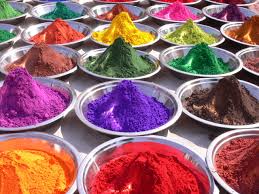For as far back as the early 1700s, many fabrics contained dye that was made from natural substances such as plants, animals and minerals. However, all that changed around 1856 when scientists discovered that it was possible for them to create synthetic dyes that could be applied to foods, building material and clothing.

And while it may be true that synthetic dyes revolutionized the clothing business sector and made them more affordable to manufacture and thus, more cost efficient for the consumer as an end result, one of the downsides to this is that alarming research has been demonstrating that synthetic dyes that are used in clothing, food and certain materials such as plastic and rubber, have been causing a variety of illnesses that we were not aware of before.
The Problem With Synthetic Clothing Dye
The problem with synthetic dyes lies with the fact that most dyes that are used for clothing and hair related uses contain chemicals that are carcinogenic and are highly toxic. A prime example of this would be the chemical aniline, a popular chemical that is used as a compound for a dye that is primarily used in the agricultural, polymer and rubber industries.
Back in 1992, a research that was submitted to the Environmental Protection Agency found that short term exposure to this pollutant caused a variety of adverse side effects such as: congestion, bladder tumor and upper respiratory tract irritation. Some other prime examples of chemicals that are used to create dyes that pose a significant health risk include:
- Toxic heavy metals such as copper, zinc which are categorized as being carcinogenic.
- Formaldehyde has been suspected of causing cancer.
- Dioxin suspected of being carcinogenic and suspected of being a possible hormone disruptor.
Effects On Adults
Besides the fact that most, if not all of the chemicals that are used to create synthetic clothing dyes contain carcinogenic properties, they can prove to be especially harmful to adults who are chemically sensitive. Some of the reported health problems that have been associated with synthetic dye include:
- Inability to concentrate
- Migraines
- Constant feeling of being tired
- Cancer
- Seizures
- Sore muscles
- Upset stomach
- Irregular breathing and heartbeat pattern.
Effects On Children 
Children in particular are especially prone to acquiring a health problem due to being exposed to fabric, food or toys that contain synthetic dyes. The problem with this is that as children gradually grow older, their immune system is still in its infancy stage and has not developed to the point whereby it can easily fend off the toxins that are within artificial dyes.
As such, whenever children get exposed to these harmful chemicals, over a period of time it can alter their development which can cause long lasting and in some cases health problems that may last for the entirety of that child’s life. Some of the reported development related issues that occur within children that have been exposed to an abundance of these chemicals include:
- Poor brain and heart growth development.
- Behavioral problems.
- Interference with basic learning skills such as math, writing and reading.
- ADD-like symptoms such as hyperactivity and difficulty concentrating on one task for too long.
Safer Alternatives for Dying Clothing
As the medical community continues to conduct various studies on the dangers that are associated with synthetic clothing dyes, some medical experts have taken it upon themselves to to advise the public that their are natural ingredients that can be used as Eco-friendly dyes. Some of them include:
- Silkworms that have been fed florescent blue produces permanent hue.
- Onion skins produce yellow/orange dye.
- Dandelion roots can be used as a brown dye.
- Lavender can be used as a pink dye.
- Red cabbage can be used as a purple dye.
- Hyacinth flowers can be used to create blue dye.
- Iris roots can be used to create gray/black dye.
For insight, check out this great article on Synthetic vs. Natural Dyes for clothing.